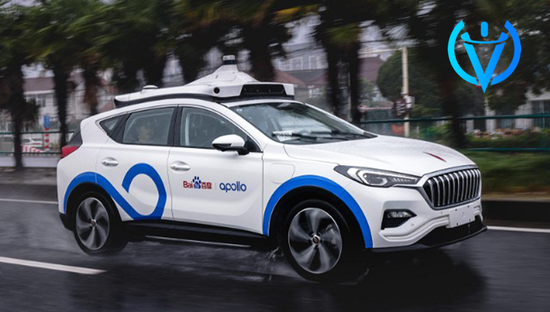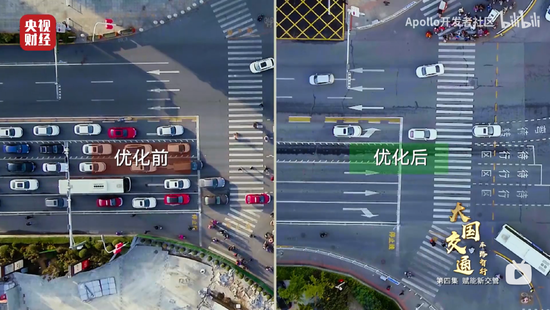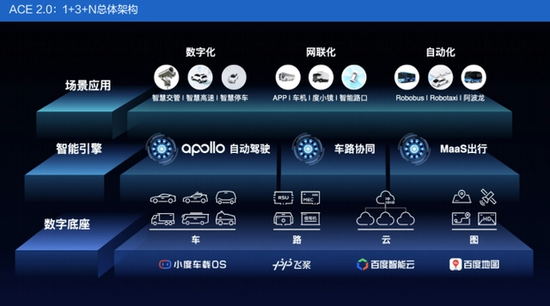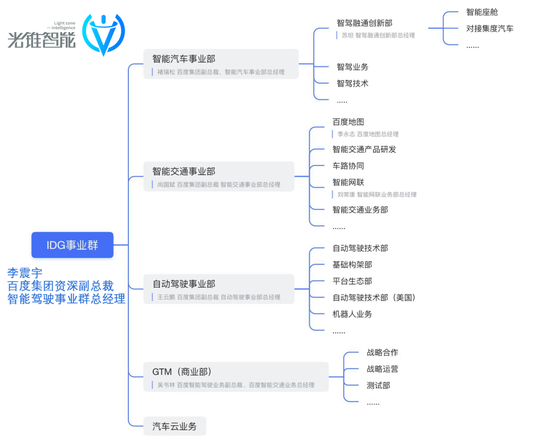
Text | Zhou Wenbin
Source | Light Cone Intelligence
The platform economy has seen the dawn, but reducing costs and increasing efficiency is still the main theme of technology companies.
Recently, according to the Science and Technology Innovation Board Daily, Baidu Intelligent Driving Group (IDG) is laying off personnel. The layoffs are mainly concentrated in the vehicle-road collaboration, intelligent network and intelligent transportation business units under the Intelligent Transportation Business Unit (ACE). The scale of the layoffs is relatively large. According to sources familiar with the matter quoted by the Science and Technology Innovation Board Daily, the Intelligent Transportation Division has been notified that all employees have no year-end bonus.
‘Light Cone Intelligence’ also asked Baidu for verification. Baidu responded that layoffs are normal personnel adjustments, and it is not accurate that all employees do not have year-end bonuses. In fact, it is only employees with poor performance appraisals who do not have them, not all, and the official layoffs will not start until the annual report is settled in March.
Before news of layoffs came out, Baidu founder, chairman and CEO Robin Li also pointed out many internal problems in his speech at the end of the year. For example, only 20% of the self-developed income of a celebrity business, 70% is resale, which is no different from that of a trading company; students who do technology are far away from the market; employees do not have a deep understanding of the nature of business, and many new businesses are losing money, etc.
On the whole, Li Yanhong expressed the direction of continuing to reduce costs and increase efficiency, and accelerate the commercialization process. In the past, 2022 was actually the first year that Baidu’s IDG department operated independently and officially shouldered the goal of commercialization.
During the year, Baidu ACE intelligent transportation solutions were implemented in 39 cities, released ANP3.0 with urban assisted driving capabilities, launched the self-driving development platform Apollo 8.0 and a new generation of unmanned vehicles with a cost of only 250,000. . . . . .
It can be said that the Baidu IDG business group in 2022 has been moving towards the goal of Robin Li, but judging from the news of layoffs at the end of the year, the adjustment of Baidu IDG is far from over.
Hardest hit by layoffs, Smart Transportation (ACE)
According to media reports, IDG’s year-end layoffs are mainly concentrated in the vehicle-road collaboration, intelligent network and intelligent transportation business units under the Intelligent Transportation Division (ACE).
At present, in addition to supporting departments, the IDG business group mainly includes the smart car business unit, the smart transportation business unit, and the autonomous driving business unit, which are respectively responsible for the technology and commercialization of Baidu’s autonomous driving in terms of vehicles, roads, and travel.
At the 100-person electric vehicle forum in March 2022, Shang Guobin, vice president of Baidu and general manager of the Intelligent Transportation Division, explained ACE in this way: “A stands for autonomous driving, C stands for vehicle-road coordination, and E stands for efficient travel.” That is, by building smarter roads, we can achieve more efficient and safer travel with autonomous driving.
Specifically, the Intelligent Transportation Division also includes application scenarios such as intelligent traffic management, intelligent highways, intelligent parking, and intelligent public transportation. It can be seen that Baidu’s Intelligent Transportation Division is essentially a department serving the construction of smart cities, but the key technology depends on the construction of vehicle-road coordination.

Vehicle-road coordination has two important application directions, one is to assist bicycle intelligence, and the other is to improve the operating efficiency of urban traffic.
The first is bicycle intelligence. To give a simple example, on a road with complete vehicle-road coordination, even an ordinary car can achieve a certain degree of automatic driving as long as it can interact with road-end devices (smart network connection).
Shang Guobin once shared such a test. At an intersection equipped with vehicle-road coordination equipment in Yizhuang, Beijing, they turned off the vehicle-side perception equipment and only relied on roadside perception. Protect the left turn.
The more specific advantage of this solution is that it can achieve autonomous driving at an overall lower cost.
Tsinghua University Intelligent Industry Research Institute (AIR) and Baidu Apollo jointly launched a white paper on vehicle-road collaboration technology innovation “Key Technologies and Prospects of Vehicle-Road Collaboration for Autonomous Driving”. By saving 2,000 yuan in cost, you can invest about 500,000 yuan per kilometer of road and 818,400 yuan at each intersection to upgrade all intelligent equipment. And 2,000 yuan is placed on a smart car that meets the L4 level, which may be worthy of installing a lidar.
In addition, vehicle-road coordination also helps to solve the problem of bicycle intelligence in blind spots such as “ghost probes”. Liu Changkang, vice president of Baidu IDG’s intelligent driving business group and general manager of intelligent network business, once gave data that vehicle-road coordination can reduce safety accidents by 90% on the basis of 90%.
The second is to improve the operating efficiency of urban traffic.
For example, in a CCTV documentary on smart transportation, it was mentioned that on a road in Baoding that has been optimized with artificial intelligence signals, the driving speed on the main road increased by 3.3Km/hour, the number of parking times decreased by 26%, and the length of queues at intersections decreased by 20~ 30 meters.

Sun Ning, general manager of a vehicle-road coordination company in Beijing, gave such a set of data. In Yizhuang, Beijing, where the layout of vehicle-road coordination has been completed, the number of parking on the green wave main line has been reduced by an average of 35.45%, and the travel time has been reduced by an average of 10.24%. The single-point adaptive intersection ( Yongchang Middle Road intersection) The average length of queues is reduced by 19.63%, and the average time wasted on green lights is reduced by 5.25%. Liu Changkang also mentioned that after Baidu’s vehicle-road coordination was implemented in Huangpu, Guangzhou, the average travel time of vehicles decreased by 25%, and the congestion delay rate decreased by 30%.
In the past two years, Baidu Intelligent Transportation has also accelerated its layout.
In October 2021, Baidu released ACE Intelligent Transportation Engine 2.0, forming an overall structure of 1+3+N. That is to say, the “vehicle-road cloud map” is used as the digital base, and autonomous driving, vehicle-road coordination, and MaaS travel are used as intelligent engines, and then extended to include multiple application scenarios such as smart transportation, smart parking, and Robotaxi.

By the third quarter of this year, Baidu’s financial report data shows that, based on the contract value of 10 million, Baidu has implemented Baidu ACE intelligent transportation solutions in 63 cities. According to the statistics of Shenwan Hongyuan, a securities company, the cumulative contract value of Baidu’s major program projects from 2021 to 2022 reached 1.76 billion yuan.
This number will still be 24 in 2021, that is to say, on average, Baidu Smart Transportation is rapidly landing at a rate of more than 10 cities per quarter.
“Smarter road” + “smarter car” is the overall path of Baidu’s autonomous driving, and according to the “Intelligent Networked Vehicle Technology Roadmap 2.0” released by my country in 2020, it is expected that the coverage of C-V2X terminals in 2025 Reach 50%, and achieve 100% full coverage by 2030.
In other words, from 2022 onwards, smart transportation represented by vehicle-road coordination may enter a stage of rapid development.
The challenge of vehicle-road coordination: tasteless and low gross profit
Since vehicle-road coordination has so many advantages and has a good prospect, why does Baidu focus on laying off the intelligent transportation department? This is actually the ideal fullness and realistic skinny of vehicle-road coordination.
In fact, not only Baidu, but almost all companies engaged in vehicle-road coordination and smart transportation are now facing commercialization problems.
Huang Chang, co-founder and CTO of Horizon, once talked about vehicle-road collaboration. He believes that vehicle-road collaboration sounds beautiful and is easy to implement technically, but it is difficult to achieve large-scale commercial operations. , Market regulation, cost sharing, value distribution, commercial insurance and many other complex factors are actually beyond the scope of technology.
The first is to assist bicycle intelligence. In this scenario, vehicle-road coordination requires close cooperation between “vehicle” and “road”. But these two are not a close partner, because from the current technological development direction, vehicle-road coordination cannot be separated from bicycle intelligence, but bicycle intelligence can be separated from vehicle-road coordination.
In addition, the current construction of vehicle-road coordination is still in the early stage, and it is only built in specific demonstration areas such as Beijing Yizhuang, Chengdu High-tech Zone, Chongqing Yongchuan, etc., and the points are not connected. There are many restrictions on user experience.
But for car companies, they obviously don’t want to wait until the vehicle-road coordination is built before developing autonomous driving. So at present, major car companies are focusing on bicycle intelligence.
For example, domestic autopilot companies represented by Momo propose a perception-heavy autopilot route and plan to rely on powerful single-vehicle intelligence to solve roadside problems. replace it.
All of this is actually to bypass unnecessary obstacles and speed up the landing of self-driving cars to seize the market in advance.
In addition, the reliability of vehicle-road coordination is actually questioned by bicycle smart players.
For example, Han Xu, the founder and CEO of WeRide, gave an example: “50 smart street light poles are installed on a 10-kilometer road. If a street light pole does not work normally for one day in 365 days, the reliability of the entire road is only 87%. If you drive it 10 times Once there may be a danger, do you dare to ride in such an automatic driving?”
So at present, the government is mainly paying for the vehicle-road coordination, which is essentially a government-led infrastructure upgrade under the new infrastructure. But if only the government pays the bill, the profit margins for companies like Baidu are actually limited.
Judging from the partial orders of more than 10 million from local governments in 2021, in the construction of smart transportation, government procurement includes two parts: hardware and software. Baidu obviously does not produce hardware, which is why Li Yanhong mentioned in his year-end speech: “A star business, a high-growth business, if you look closely, self-developed products only account for more than 20% of revenue, and more than 70% of things are What’s the difference between a trading company and a resale?”

In 2021, my country’s urban intelligent transportation market will have over 100 million intelligent network projects
Data source: ITS114, Network Synthesis
Tabulation: Insights New Research Institute
In addition to Baidu, Huawei, Tencent, and Mushroom Automobile are the leading companies that have landed in intelligent transportation. The brokerage Shenwan Hongyuan mentioned in a recent report that from 2021 to 2022, the total amount signed by Huawei and Tencent Reached 1.58 billion yuan and 1.22 billion yuan, respectively, and the total contracted value of Mushroom Car Alliance, which ranked first, exceeded 10 billion yuan.

But it’s not just Baidu. Almost all smart transportation is facing a problem, that is, how to put this smart transportation system into commercial operation to maximize commercial value.
In this regard, Mushroom’s solution is to intervene in the operation of urban public transportation and public service vehicles based on smart transportation, such as the commercial operation of self-driving buses, sweepers, patrol cars, Robotaxi and other self-driving public service vehicles.
However, Zhu Lei, the co-founder of Mushroom Cars, also said: “We are entering the public service system market, and it is more about maintaining a certain gross profit rate than pursuing a higher gross profit rate. In a certain period, the gross profit rate will remain relatively reasonable. or lower levels.”
“In the future, Mushroom Cars hopes to make profits through a complete set of cloud services.” Zhu Lei mentioned: “The biggest characteristic of the commercial value of the cloud is its very large scale, and its business performance will also be very good in a longer period of time.”
And this point can also be seen in the business logic of Baidu IDG. For example, in the financial report, the implementation of Baidu ACE is not included in the Intelligent Transportation Division, but is included in Baidu Cloud.
Therefore, this layoff may also show Baidu IDG’s rethinking and adjustment of business collaboration among vehicles, roads, and clouds. More importantly, as Li Yanhong mentioned at the year-end meeting, it is necessary to speed up the commercialization process and increase profits.
IDG is changing, L2 makes money before L4
In fact, Baidu IDG has not stopped business adjustment and commercialization throughout 2022.
One of the biggest moves is that in June 2022, Baidu Maps was transferred from CTO Wang Haifeng to IDG Intelligent Transportation Division, and Baidu Maps General Manager Ji Yongzhi also turned to Shang Guobin to report.
After Baidu Maps was merged into IDG, it completed the last piece of the puzzle of IDG in autonomous driving from technology research and development to commercialization.
Among the three major business divisions under Baidu IDG (except the support department), the smart car division led by Chu Ruisong is responsible for vehicle-end services such as assisted driving and smart cockpit, as well as communication with Jidu Automobile; the smart car division led by Shang Guobin The transportation division is responsible for the construction of smart roads; the autonomous driving division led by Wang Yunpeng is responsible for the research and development of autonomous driving technology and the implementation of L4 business such as Robotaxi.
On the whole, on the one hand, Baidu IDG has formed a technical layout of vehicles, roads, travel, and maps; on the other hand, it has formed an industrial landing from L4 (Robotaxi) to L2+, L3 (Smart Automobile Division), and covers Tier 1 And multiple roles such as independent car building. It can be said that Baidu wants everything.

Figure: Light Cone Intelligence organizes according to public information
In addition to organizational structure adjustments, IDG product releases and commercialization are also very intensive.
In addition to the intensive implementation of the Baidu ACE intelligent transportation solution mentioned above, from bottom to top at the end of November 2022, Baidu mentioned on Apollo Day that the second generation of the self-developed AI chip Kunlun chip has completed the unmanned driving scenario end-to-end. End performance adaptation. In December, Apollo 8.0, a new-generation open platform for autonomous driving, and APN3.0, which can complete urban assisted driving, were launched.
Earlier in July, Baidu also launched the sixth-generation mass-produced unmanned vehicle Apollo RT6, reducing the cost to 250,000 yuan, which will help accelerate the popularity of Robotaxi. In fact, this is also the case. Baidu Carrot Kuaipao launched in Hefei, Chengdu, Chongqing, Wuhan and other cities last year. In July, it obtained a commercial charging license for autonomous driving with no one behind the steering wheel in Yizhuang, Beijing.
Judging from the financial report data for the third quarter, Carrot provided 477,000 unmanned travel services in the third quarter, a year-on-year increase of 311% and a quarter-on-quarter increase of 65%. As of the third quarter, Carrot Kuaipao has provided a total of 1.4 million travel services in the mainland.
Its ASD (Apollo Self Driving, Apollo self-driving) solution will also reach cooperation with BYD and Dongfeng in 2022. Dongfeng’s popular models will use Baidu ANP, AVP and high-precision map services.

Of course, this series of achievements was also completed under pressure.
Since All in artificial intelligence around 2015, Baidu Apollo has been placed high hopes by Robin Li, but as the speed of autonomous driving is much lower than expected, it is not a long-term solution to continue to burn money every year.
Not long ago, Robin Li mentioned in an internal speech, “We should not only look at income, but also at profit, and more importantly, at the ratio of input to output.” But in fact, IDG’s changes in this regard were earlier.
In December 2021, Baidu made a major adjustment to the IDG business group, that is, the employees and assets of the Baidu IDG business group will be transferred from relevant main companies of Baidu Group to several Baidu wholly-owned subsidiaries.
Li Zhenyu, the general manager of IDG, explained this adjustment at the internal meeting at the time: “For better operation, IDG transferred to a new entity for independent operation, an independent legal person, and an independent company.” The implication is that although IDG is in the organizational structure The Internet still belongs to the business group under the Baidu Group, but it has to gradually start independent accounting, and even be responsible for its own profits and losses.
Tencent Shenwang previously reported that after the first quarter of 2022, some commercial departments of the IDG business group will need to formulate and complete annual revenue targets. The cost of IDG is linked to the annual revenue target. To put it simply, the group still invests in IDG, but the specific amount of investment depends on how much IDG can earn back. Therefore, since the first quarter of last year, IDG has actually been under relatively large commercialization pressure and has begun to save costs.
In order to improve IDG’s commercialization capabilities, in September 2021, Chu Ruisong will be transferred to IDG to serve as the general manager of IDG’s smart car division, fully responsible for the smart car business. Baidu IDG can only make money from the smart car business now, while Chu Ruisong was mainly responsible for the B2B SaaS business at Baidu before, and he is a professional counterpart to the smart car business that is also oriented to B-side commercialization.
After this series of reforms and adjustments, IDG has obviously made a lot of achievements, but in the context of the continuous cost reduction and efficiency increase of major enterprises, IDG’s efforts are obviously not enough.
Therefore, when Robin Li mentioned the input-output ratio at the end of the year, IDG began to lay off staff again. I just don’t know how far IDG is from their goal after this layoff?

(Disclaimer: This article only represents the author’s point of view, not the position of Sina.com.)
This article is reproduced from: https://finance.sina.com.cn/tech/csj/2023-01-17/doc-imyanfvk9923928.shtml
This site is only for collection, and the copyright belongs to the original author.